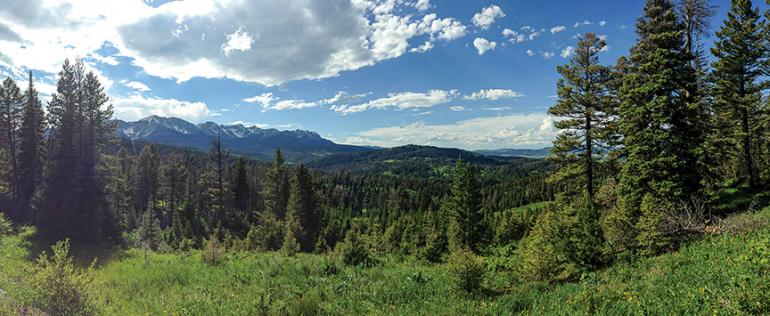Not for Sale
A national issue comes home.
Last October, the state of Utah sold off almost 400 acres of state-owned land in an area known as Comb Ridge. Normally, this wouldn’t make the news in Montana, but it’s part of a larger story.
The transfer of federal lands to states, and the possibility that those lands will then be privatized, is an issue that has gripped the attention of most Westerners, and certainly most Montanans. Not only that, this parcel on Comb Ridge provided access for the public to hike, camp, and explore a vast area of public land. When I was in college, I spent a memorable weekend backpacking in this exact area—and I stumbled onto it precisely because it was so accessible. At first people weren’t sure what would happen to the parcel after it was sold, but it didn’t take long for the new owners to lock the gate and shut off access.
Just a few years ago, most people couldn’t have fathomed that our public lands would ever be anything but public. Times have changed. Today, special interests like the Utah-based American Lands Council are waging an aggressive campaign to get rid of public lands in the west. This public-land heist threatens hundreds of millions of acres of national forests, rangelands, wildlife refuges, parks, wilderness areas, and historic sites, but it also threatens the fundamental American notion that our public lands belong to everyone.
What does the public-land heist mean for Montana? Montana has 27 million acres of federal public land within its borders and these lands are an essential part of our way of life. Public-land heist proponents have claimed that state lands are public too, and transferring public lands to states wouldn’t change things. This isn’t true. Unlike the federal government, Montana is constitutionally mandated to balance its budget each year. This puts state lands at risk. For example, the federal government pays the majority of wildfire fighting costs in Montana each year. If our federal public lands were transferred to the state of Montana and we were suddenly wholly responsible for firefighting costs on those lands, there’s a very real chance that places you like to hike, climb, paddle, ski, bike, fish, hunt, or camp would have to be sold for the state to balance its budget.
And even if the state didn’t sell off its newly acquired lands, it wouldn’t mean recreationists are in the clear. State land is managed very differently from federal land. Montana is required to generate revenue from state trust lands and this means it has to charge for access. To recreate or camp on state land in Montana you need a license and recreation can be restricted or prohibited if lands are leased for other purposes. Not only that, you’re only allowed to camp for two days in any one spot. I don’t know about you, but my family likes to take at least one long camping trip every summer and two days just wouldn’t cut it.
Critics have pointed to the sometimes-onerous process of environmental review as reason for transferring public lands to state ownership where, presumably, this process would be “streamlined” or even eliminated. As somebody whose job involves engaging in these review processes, I understand how time-consuming they can be. But this review process is important—it’s what puts the public in public lands and allows any American, from anywhere, to have a say in how our shared lands are managed. After all, the land-management agencies are merely stewards of our public lands; we’re the owners. As owners of our most valuable national treasures, we need to defend our public lands and this means tracking what our state legislature and Congress are up to. To stay informed, visit protectourpublicland.org.
Hilary Eisen is the recreation planning and policy manager for Winter Wildlands Alliance, which is a founding member of the Outdoor Alliance and Outdoor Alliance Montana.











